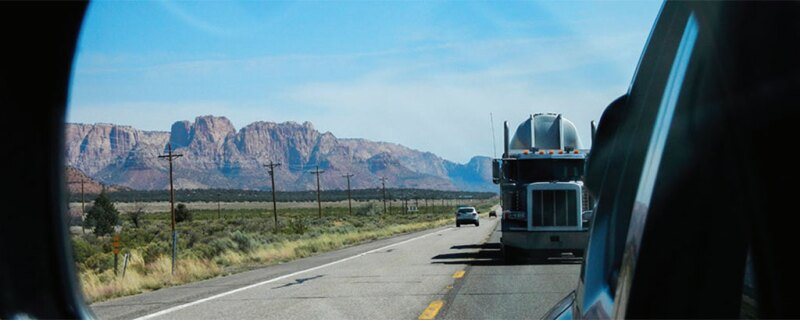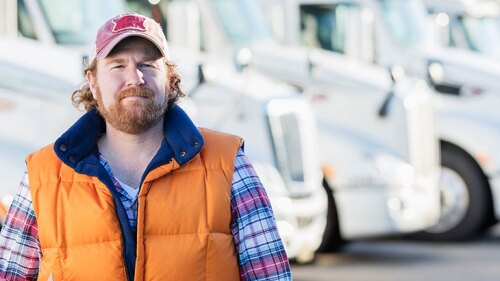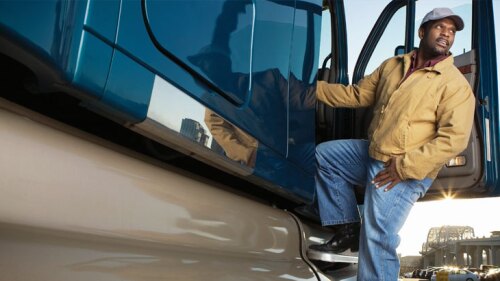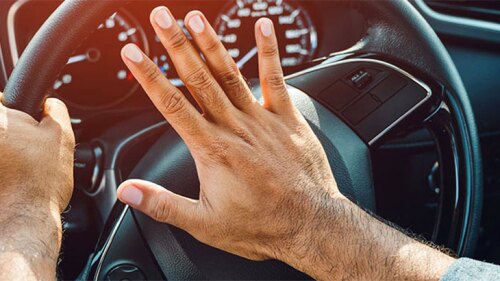How to use the 4-second rule for driving
- Pick an upcoming marker on the road. Use a line, sign, pothole, bridge, shadow, etc.
- Begin counting when the car ahead passes the chosen marker. Count slowly and steadily.
- Stop counting when your front bumper reaches the marker. If you did NOT reach 4, you are too close to the vehicle ahead of you. At 55 mph, you should be almost 323 feet behind the car ahead.
Variations from the 4-second rule
There are circumstances that require drivers to increase following distance to allow for more reaction time.
Driving commerical vehicles
Commercial vehicles, like large trucks, take longer to stop and should have an even farther following distance. If you’re driving a larger
vehicle and your speed is less than 40 mph, you should allow at least one second for each 10 feet of your vehicle length. For speeds greater
than 40 mph, add another second to the total time. Driving through rain, fog, heavy traffic, or on poor pavement will require even more time to stop in an emergency.
Likewise, the next time you pass in front of a large truck, ask yourself if you’re giving the truck driver enough space to stop in an emergency.
Inclement weather
When driving in rain or snow, always allow yourself extra room to make any emergency stops. Increase following distance to allow for greater stopping distance.
Following a motorcycle
Increase your following distance behind motorcycles as they have a much shorter stopping distance than most vehicles. Motorcyclists also have much less protection than other motorists.
Tailgating
Tailgating can be seen as aggressive behavior and may lead to road rage incidents. It’s best to maintain a safe following distance at all times.
If someone is tailgating you, never slam on your brakes to discourage them. Encourage them to pass you by moving to the slow lane, or slowing down to allow them to pass.
The information and recommendations contained in this material have been obtained from sources believed to be reliable. However, SECURA accepts no legal responsibility for the accuracy, sufficiency, or completeness of such information. Additional safety and health procedures may be required under particular circumstances. Please your SECURA Risk Management Consultant for more information.






